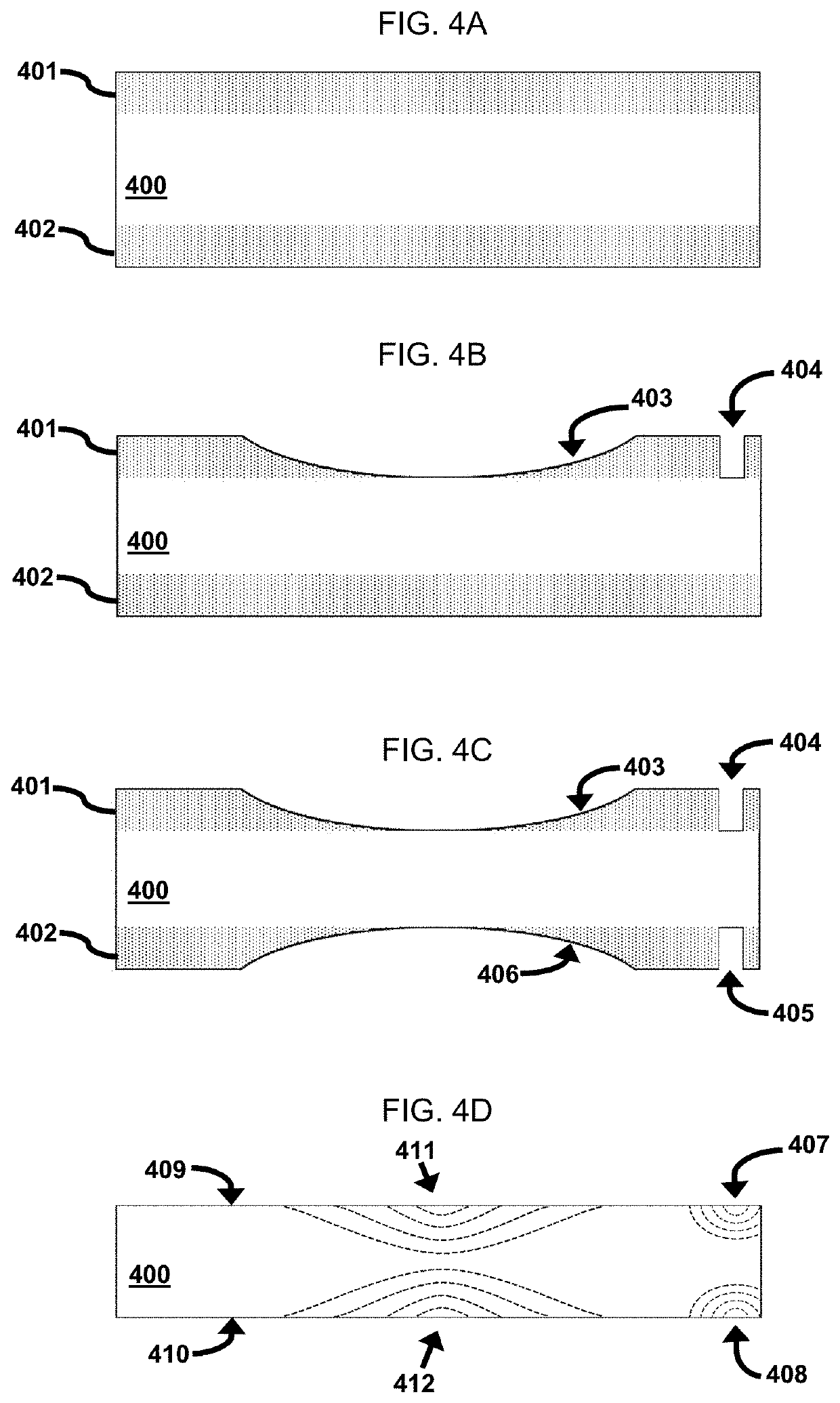Optical elements having gradient optical properties
a technology of optical properties and optical elements, applied in the field of optical elements having gradient optical properties, can solve the problems of difficult control of the distribution of gradient optical properties within the substrate, limited size of optical elements, etc., and achieve the effects of reducing manufacturing time and cost, improving light transmission, and cost saving
- Summary
- Abstract
- Description
- Claims
- Application Information
AI Technical Summary
Benefits of technology
Problems solved by technology
Method used
Image
Examples
example
[0047]A glass article having desired mechanical and optical properties is selected for use as a substrate. The substrate has a sodium content greater than 5 mol % and less than 30 mol %. The thickness of the substrate may be 0.1-5 mm. The top and bottom surfaces of the substrate are polished. An ion diffusion preventing barrier material such as Silicon Nitride is disposed on the bottom surface of the substrate using chemical vapor deposition. The substrate is placed in a KNO3 salt solution at an elevated temperature below the glass transition temperature of the substrate. Potassium ions are exchanged for Sodium ions within 1-100 μm of the top surface of the substrate. Potassium ions decrease the diffusivity at the surface of the glass substrate thereby creating a DRM in the top surface of the substrate. The DRM is coated in photoresist. The photoresist is patterned using grayscale photolithography and a developer solution to create a three-dimensional surface relief patterns in the ...
PUM
| Property | Measurement | Unit |
|---|---|---|
| thick | aaaaa | aaaaa |
| thick | aaaaa | aaaaa |
| diameter | aaaaa | aaaaa |
Abstract
Description
Claims
Application Information
 Login to View More
Login to View More - R&D
- Intellectual Property
- Life Sciences
- Materials
- Tech Scout
- Unparalleled Data Quality
- Higher Quality Content
- 60% Fewer Hallucinations
Browse by: Latest US Patents, China's latest patents, Technical Efficacy Thesaurus, Application Domain, Technology Topic, Popular Technical Reports.
© 2025 PatSnap. All rights reserved.Legal|Privacy policy|Modern Slavery Act Transparency Statement|Sitemap|About US| Contact US: help@patsnap.com



